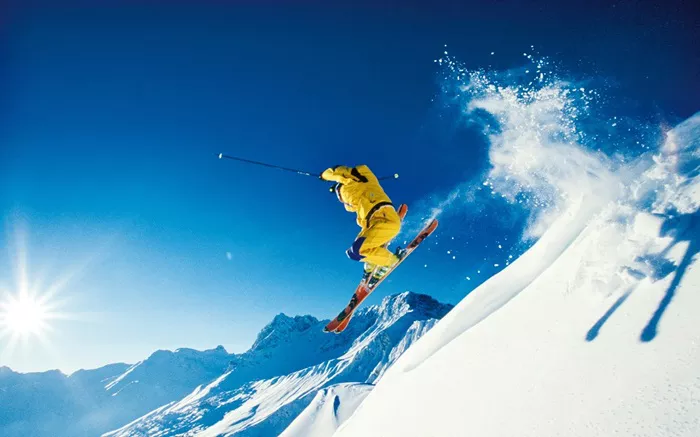Cross-country skiing is a unique and exhilarating sport that combines endurance, technique, and an appreciation for nature. One of the most distinctive features of cross-country skis is the presence of grooves, particularly in classic skis. These grooves play a crucial role in enhancing performance and safety on the trails. This article explores the purpose and benefits of grooves in cross-country skiing, delving into their design, functionality, and historical context.
The Design of Cross-Country Skis
Cross-country skis are designed to be long, narrow, and lightweight. This design is intentional, as it allows for efficient movement across varying terrains. The typical width of classic cross-country skis ranges from 40 to 50 mm, which facilitates a small surface area that reduces friction with the snow. Unlike alpine skis, which have a pronounced sidecut for turning, classic cross-country skis maintain a straight profile to promote stability and speed on flat or gently rolling trails.
Grooves: A Key Feature
The grooves found on classic cross-country skis serve multiple purposes. Primarily, they are located down the center of the ski base and are designed to enhance directional stability. When skiing, these grooves help guide the ski along a straight path by creating a channel that compresses snow into a ridge. This ridge acts similarly to the keel of a boat, providing stability and reducing lateral movement.
Moreover, grooves prevent the ski from veering off course during diagonal striding—a fundamental technique in cross-country skiing where skiers alternate their weight from one ski to another while pushing off with their poles.
How Grooves Improve Performance
The functionality of grooves can be broken down into several key benefits:
Directional Stability: The central groove helps maintain a straight trajectory. This is particularly important when skiing on groomed trails where maintaining speed and direction is essential.
Enhanced Grip: In conjunction with grip zones—areas designed to provide traction—the grooves allow skiers to push off effectively without losing balance or control. Grip zones may feature textured patterns or grip wax that further improve traction against the snow.
Reduced Friction: The narrow design of cross-country skis already minimizes friction; however, the presence of grooves further enhances this by allowing for smoother gliding over snow surfaces. This reduction in friction is vital for conserving energy during long-distance skiing.
Facilitating Technique: Grooves support various skiing techniques by allowing skiers to focus on their movements rather than worrying about maintaining balance or direction. For instance, during diagonal striding, skiers can concentrate on their rhythm and timing without being distracted by steering issues.
Historical Context of Grooves in Ski Design
The use of grooves in ski design is not a modern innovation; it has roots that date back centuries. Historical evidence suggests that skis with grooves were used as far back as 400 AD in Finland. Over time, these designs have evolved to meet the changing needs of skiers and advancements in technology.
The earliest known skis featured multiple grooves; some examples from over 3,000 years ago had up to five grooves on their bases. Such historical insights highlight the significance of grooves in enhancing skiing efficiency and safety long before modern materials and techniques were developed.
Types of Grooves
While most classic cross-country skis feature a single central groove, variations exist based on specific skiing needs:
Single Groove: Common in recreational classic skis, this design provides adequate stability for general use on groomed trails.
Multiple Grooves: Some advanced models may incorporate multiple grooves for enhanced performance in competitive environments.
These designs can offer better grip and directional control under varying snow conditions.
No Groove Designs: Backcountry skis often lack central grooves as they are designed for different types of terrain where maneuverability rather than straight-line stability is prioritized.
Challenges Associated with Grooved Skis
Despite their advantages, grooved skis can present challenges:
Difficulty in Turning: The very stability that grooves provide can make turning more challenging. Skiers must learn to counteract the directional pull created by the groove when navigating turns.
Limited Use on Uneven Terrain: In backcountry settings where terrain varies significantly, grooved skis may not perform as well as flat-bottomed designs that allow for greater maneuverability.
Techniques for Maximizing Performance with Grooved Skis
To make the most out of grooved skis, skiers should focus on mastering specific techniques:
Diagonal Striding: This technique involves alternating weight between skis while pushing off with poles. Properly engaging the grip zone while maintaining balance is crucial for effective movement.
Step Turns: When navigating turns, skiers can employ step turns to maintain speed while adjusting direction. This technique requires practice but allows for smoother transitions during descents.
Skidding Techniques: Advanced skiers may use skidding techniques to control speed while turning. By positioning skis parallel or in a snowplow shape, they can adjust their glide speed effectively.
Proper Weight Distribution: Understanding how to distribute weight between both skis during various phases of skiing will enhance performance and reduce fatigue.
Conclusion
The incorporation of grooves into cross-country ski design represents a significant advancement in enhancing skier performance and safety on trails. These features not only improve directional stability but also facilitate effective techniques necessary for navigating diverse terrains.
As cross-country skiing continues to evolve with new technologies and materials, understanding the role of grooves will remain essential for both novice and experienced skiers alike. Whether gliding through serene forests or racing against time in competitions, grooved skis provide an invaluable advantage that enhances the overall experience of this exhilarating sport.
Related topics:
- What Is The Equipment for Freestyle Skiing?
- Where Can I Rent Cross-Country Ski Equipment in Aspen?
- Where to Stay While Skiing in Alta?

